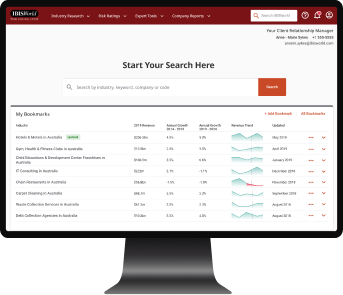STATE ECONOMIC PROFILE
Alaska Economic Overview
GROSS STATE PRODUCT
Growth Rate
State Growth Rank
POPULATION
Growth Rate
State Growth Rank
BUSINESSES
Growth Rate
State Growth Rank
What is Alaska's Gross Domestic Product (GDP)?
STATE ECONOMIC PROFILE
Alaska Industry Trends
What are Alaska's Largest Industries by Revenue?
STATE ECONOMIC PROFILE
Top Companies in Alaska
Top 10 Companies Headquartered in Alaska by Employment
STATE ECONOMIC PROFILE
Alaska Sector Statistics
What is Alaska's GDP by Sector?
What is Alaska's Employment by Sector?
STATE ECONOMIC PROFILE
Alaska Employment Trends
EMPLOYMENT
Growth Rate
State Growth Rank
UNEMPLOYMENT
Growth Rate
State Growth Rank
What Employment Trends are Impacting Alaska?
PER CAPITA DISPOSABLE INCOME
Growth Rate
State Growth Rank
PER CAPITA CONSUMPTION EXPENDITURE
Growth Rate 2013-18
State Growth Rank
What is Alaska's Per Capita Disposable Income?
STATE ECONOMIC PROFILE
Alaska Construction & Building Trends
NONRESIDENTIAL CONSTRUCTION
Growth Rate
State Growth Rank
RESIDENTIAL CONSTRUCTION
Growth Rate
State Growth Rank
BUILDING PERMITS
Growth Rate
State Growth Rank
What can construction trends tell you about a state’s economy?
STATE ECONOMIC PROFILE
Alaska Population Statistics
Which Counties in Alaska have the Largest Populations?
STATE ECONOMIC PROFILE
Alaska Demographics
Education Level
Race in
Alaska State Industry Reports
IBISWorld State Industry Reports help you quickly understand how an industry performs at the state level compared with the national level by providing accurate and unbiased industry information with a local focus. Use this collection to:
- Discover key local industry trends
- Identify threats and opportunities at the subnational level
- Inform your business strategies and planning
See our list of .
